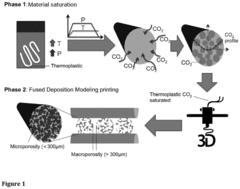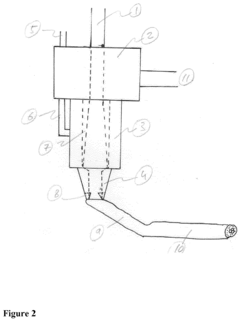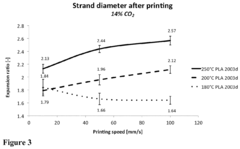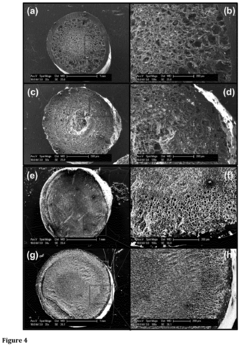Research on hierarchically porous materials - Eureka
OCT 8, 20244 MIN READ
Generate Your Research Report Instantly with AI Agent
Patsnap Eureka helps you evaluate technical feasibility & market potential.
Hierarchically Porous Materials Background and Goals
The primary objective is to provide a comprehensive overview of the development history and evolution trends in the field of hierarchically porous materials. This includes tracing the key milestones and technological breakthroughs that have shaped the progress of this domain. Additionally, it aims to clearly define the expected technological goals and advancements that researchers and industries are striving to achieve in the future.
The core focus will be on presenting a detailed timeline of the critical developmental stages in hierarchically porous materials, highlighting the major technological achievements and solutions at each phase. This will provide a clear understanding of the technological progression and pave the way for identifying potential future research directions and innovative approaches.
The core focus will be on presenting a detailed timeline of the critical developmental stages in hierarchically porous materials, highlighting the major technological achievements and solutions at each phase. This will provide a clear understanding of the technological progression and pave the way for identifying potential future research directions and innovative approaches.
Market Demand for Porous Materials
- Growing Demand
Hierarchically porous materials have witnessed a surge in demand across various industries due to their unique properties and versatile applications. The market is driven by the need for advanced materials in catalysis, energy storage, filtration, and biomedical fields. - Catalysis and Energy
The high surface area and tunable pore structure of porous materials make them ideal for catalytic processes and energy storage/conversion applications. The demand for efficient catalysts and high-performance batteries/supercapacitors is fueling market growth. - Environmental Applications
Porous materials find extensive use in water treatment, air purification, and environmental remediation. The increasing emphasis on sustainable solutions and stricter environmental regulations are driving the demand for advanced porous adsorbents and membranes. - Biomedical and Pharmaceutical
The biocompatibility and controlled release properties of porous materials have led to their adoption in drug delivery systems, tissue engineering, and biosensors. The growing healthcare industry and demand for targeted therapies are driving market expansion. - Emerging Applications
Hierarchically porous materials are also finding applications in emerging fields such as 3D printing, thermal insulation, and optoelectronics, further broadening the market potential.
Current State and Challenges of Porous Materials
- Porous Materials Overview
Porous materials have a high surface area and interconnected pore network, enabling applications in catalysis, adsorption, separation, and energy storage. - Current Challenges
Key challenges include controlling pore size distribution, improving structural stability, enhancing mass transport, and tailoring surface chemistry for specific applications. - Synthesis Limitations
Conventional synthesis methods often lack precise control over pore architecture, leading to non-uniform pore sizes and limited accessibility. - Structural Instability
Porous materials can suffer from structural collapse or pore blockage under harsh conditions, limiting their practical use. - Mass Transport Barriers
Diffusion limitations within the porous network can hinder efficient mass transfer, reducing performance in catalytic and adsorption processes. - Surface Functionalization Challenges
Tailoring surface chemistry for specific applications remains challenging, particularly for hierarchically porous materials with complex architectures.
Key Players in Porous Materials Industry
The competitive landscape for hierarchically porous materials involves academic institutions and companies, indicating a transition from research to early commercialization. The market is growing due to applications in catalysis, energy storage, and biomedical fields. Key players include companies like Chongqing Runze Medical Apparatus & Instruments Co. Ltd., Chengdu Yitai Technology Co., Ltd., and Micron Technology, Inc., advancing the technology's maturity. Academic institutions like Xi'an University of Technology and Korea Advanced Institute of Science & Technology contribute to foundational research and potential breakthroughs.
IFP Energies Nouvelles
Technical Solution: IFP Energies Nouvelles develops hierarchically porous materials for catalysis and energy storage applications, with controlled pore sizes and distributions to enhance performance.
Strength: High expertise in catalysis and energy applications. Weakness: Limited commercial deployment.
Dalian Institute of Chemical Physics Chinese Academy of Sci
Technical Solution: Dalian Institute of Chemical Physics researches hierarchically porous materials for catalysis and adsorption processes, synthesizing materials with multi-scale porosity to improve efficiency and selectivity.
Strength: Strong research background and innovative synthesis methods. Weakness: Primarily focused on academic research.
Core Innovations in Porous Material Technology
Hierarchical porous structure
PatentInactiveEP3403806A1
Innovation
- The use of additive manufacturing technologies, specifically fused filament fabrication (fff) for thermoplastic materials, to accurately control the 3d shape and porosity distribution of the polymers. this allows for the production of complex morphologies while printing, which is a significant advancement in the field of hierarchical porous polymers.
Environmental Impact of Porous Materials
Hierarchically porous materials have garnered significant attention due to their unique structural features and potential applications. These materials possess a well-defined pore architecture spanning multiple length scales, enabling efficient mass transport and high surface area. The development of hierarchically porous materials has undergone several key stages, driven by advancements in synthesis techniques and characterization methods. Early efforts focused on traditional porous materials like zeolites and activated carbons, while recent progress has led to the design of hierarchical structures in various material systems, including oxides, polymers, and metal-organic frameworks. The ability to tailor pore sizes, geometries, and interconnectivity has opened up opportunities in catalysis, energy storage, separations, and biomedical applications. Ongoing research aims to further optimize the structural properties and explore novel synthesis routes for hierarchically porous materials with enhanced performance and functionality.
Regulatory Landscape for Porous Materials
Hierarchically porous materials have garnered significant attention due to their unique structural features and potential applications. These materials possess a well-defined pore architecture spanning multiple length scales, enabling efficient mass transport and high surface area. The development of hierarchically porous materials has undergone several key stages, driven by advancements in synthesis techniques and characterization methods. Early efforts focused on templating approaches using hard or soft templates, while recent innovations have explored self-assembly, dealloying, and additive manufacturing routes. The hierarchical porosity offers enhanced performance in catalysis, energy storage, separation, and biomedical applications by facilitating reactant/product diffusion and providing abundant active sites. Future research directions may involve precise control over pore architecture, incorporation of functional components, and exploration of scalable manufacturing processes.
Unlock deeper insights with Patsnap Eureka Quick Research — get a full tech report to explore trends and direct your research. Try now!
Generate Your Research Report Instantly with AI Agent
Supercharge your innovation with Patsnap Eureka AI Agent Platform!



